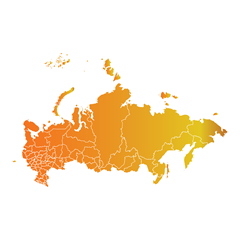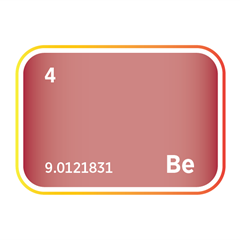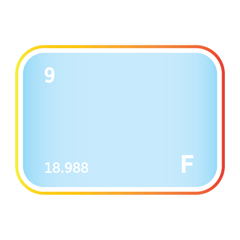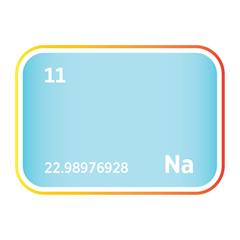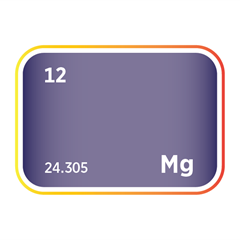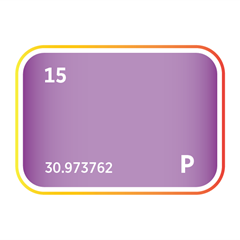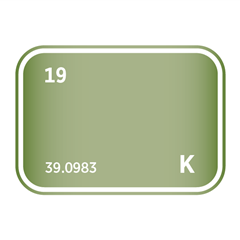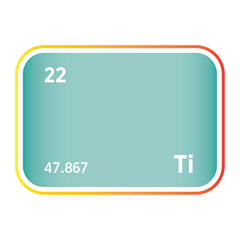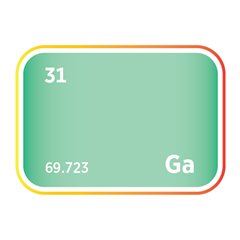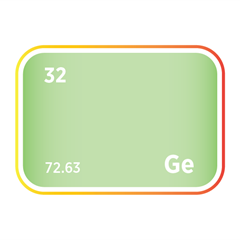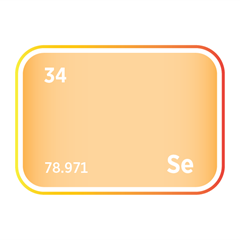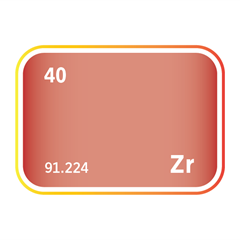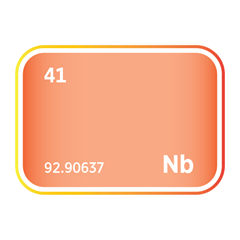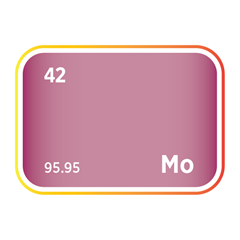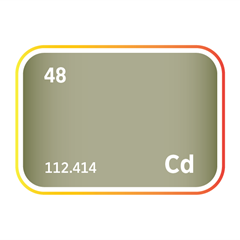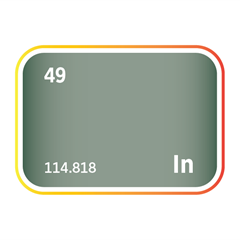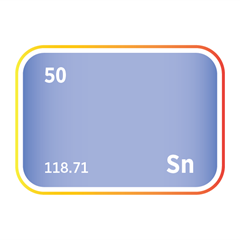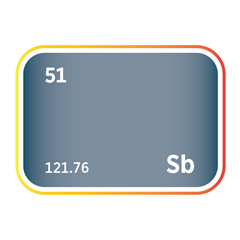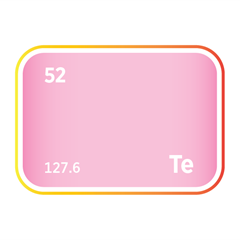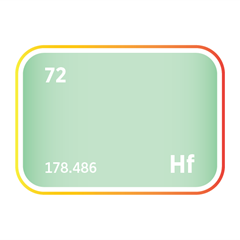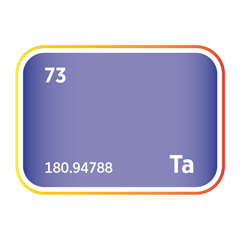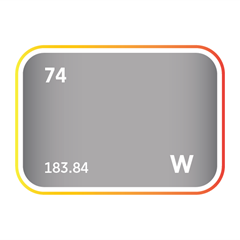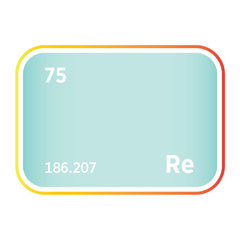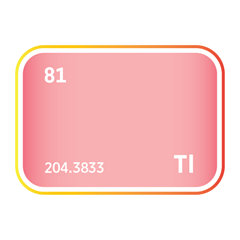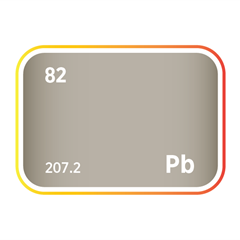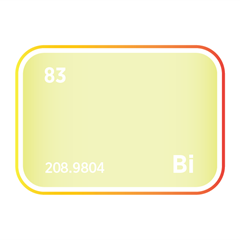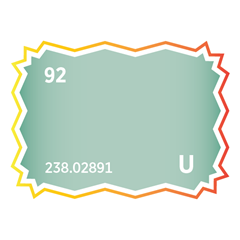Thallium
Critical Minerals and The Energy Transition
Navigating the Thallium Market
Thallium is a lesser-known yet intriguing element with unique characteristics, including softness, malleability, and a low melting point. Predominantly sourced as a byproduct from the smelting of zinc and lead ores, thallium's silvery-white appearance quickly tarnishes to bluish-grey when exposed to air. Historically significant for its use as a rodenticide and in medical imaging, the application of thallium has evolved due to its high toxicity, leading to stringent regulations on its use and disposal. Today, thallium finds niche applications in optics, using thallium bromide-iodide crystals in infrared detectors, electronics, as part of semiconductors and photoresistors, and research into high-temperature superconductivity. Despite the challenges posed by its toxicity, thallium's specialized uses in these advanced technological fields highlight its ongoing relevance. As industries and regulations adapt to mitigate health and environmental risks, thallium's market continues to be defined by its unique properties and the critical, albeit limited, applications it supports.
An introduction to thallium
Thallium demand and end-uses
Thallium is a soft, heavy metal with highly toxic properties and limited but highly specialised applications across electronics, optics, defence, and scientific research. While its use has declined significantly due to health and environmental concerns, thallium remains vital in a narrow set of high-performance technologies without suitable substitutes. Its unique electrical conductivity, infrared transparency, and chemical reactivity underpin precision devices and demand for advanced materials.
One of the most significant uses of thallium today is in electronic and semiconductor applications, where thallium-based compounds are used in specific types of superconductors, high-speed switches, and infrared sensors. Thallium’s ability to alter other materials' electrical and thermal properties makes it valuable in niche areas such as thallium-based high-temperature superconductors, which are studied for potential use in magnetic levitation, energy-efficient power transmission, and quantum computing. Although commercial adoption remains limited, research into superconducting materials continues to sustain modest demand.
In optics and infrared imaging, thallium is combined with halogens to form thallium bromide-iodide (KRS-5) crystals, which are transparent to infrared radiation. These crystals manufacture infrared optical lenses and windows for thermal imaging, night vision systems, and spectroscopy equipment. Such technologies are essential in military and industrial applications, where infrared transparency, durability, and precision are critical.
Thallium also has specific uses in the defence and aerospace industries, where it is employed in specialised materials for electronic warfare systems, communications technologies, and infrared countermeasures. Its presence in these high-value, mission-critical systems reflects its importance despite the toxicity risks and handling challenges.
In medical diagnostics, the radioactive isotope thallium-201 has been used in nuclear medicine, particularly in cardiac stress tests to assess blood flow to the heart muscle. Thallium-201 acts as a tracer in single-photon emission computed tomography (SPECT) imaging, helping to identify coronary artery disease and myocardial perfusion issues. However, its medical use has declined in favour of alternatives like technetium-99m, which offer improved safety profiles and diagnostic accuracy.
In chemical and scientific research, thallium compounds have been used in trace analysis, reagent chemistry, and studies of metal toxicity. Some thallium salts are also used in small-scale synthesis of speciality glass and ceramics, although these applications are tightly controlled due to the element’s extreme toxicity.
Due to its toxicity and environmental persistence, many former uses of thallium have been phased out, including its historical use in rodenticides, insecticides, and pharmaceuticals. In most jurisdictions, thallium is now subject to strict environmental and occupational safety controls. As a result, demand is constrained to tightly regulated industrial and scientific sectors, and handling requires specialised protocols to prevent contamination and health risks.
Thallium demand is expected to remain limited but stable in its core applications, particularly in infrared optics, scientific instrumentation, and potential new classes of superconducting materials. Interest in advanced sensing and military-grade imaging technologies may support continued use in defence-related systems, although substitution efforts and regulatory pressures will likely cap broader market growth.
Thallium’s future will depend on its continued relevance in ultra-specialised technologies and its potential role in emerging quantum and photonic applications. Despite its low volume, the metal’s performance characteristics ensure it remains a strategic material in sectors where precision, sensitivity, and thermal control are paramount. However, given its toxicity and supply limitations, long-term sustainability will rely on improved recycling, responsible handling, and strict regulatory oversight.
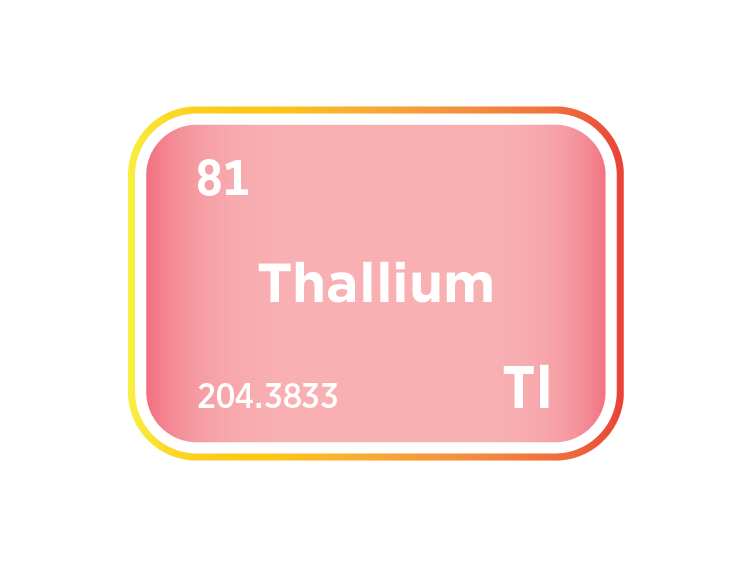
Thallium supply
Thallium supply is extremely limited in volume and the number of countries involved in its production. It is not mined directly but is instead recovered as a by-product during the smelting and refining of zinc, copper, lead, and occasionally gold ores. Recovery typically occurs from dusts, sludges, or residues in base metal processing facilities. Its availability is closely linked to these upstream sectors' operational scale, technological configuration, and environmental compliance. The metal’s by-product status imposes inherent constraints on supply flexibility and responsiveness to market shifts.
China is the most significant global producer and refiner of thallium, primarily through large-scale zinc smelting operations in provinces hosting polymetallic deposits. Kazakhstan, Russia, Peru, and Brazil also report minor levels of by-product thallium output, though data is often sparse and production volumes vary with smelter throughput and regulatory enforcement. Brazil’s potential as a thallium supplier stems from its complex base metal deposits, though commercial output remains limited and underdeveloped.
Geologically, thallium is most commonly hosted in sulphide mineral deposits. It is especially associated with sphalerite (ZnS), the principal zinc ore, where thallium can substitute for zinc in the crystal lattice. Other key hosts include pyrite (FeS₂), chalcopyrite (CuFeS₂), galena (PbS), and arsenic-rich minerals such as orpiment (As₂S₃) and realgar (AsS). In more specialised settings, thallium occurs in rare sulphosalt minerals like lorandite (TlAsS₂), notably at North Macedonia’s Allchar deposit, and crookesite (TlCu₇Se₄). These mineral assemblages typically form in epithermal, hydrothermal, or sedimentary-exhalative (SEDEX) environments, often as trace components in broader polymetallic systems.
Recycling of thallium is negligible due to its minimal usage volume, toxicity, and lack of economically viable recovery processes. Stockpiling is rare but plausible in defence or aerospace, although data remains opaque. Global trade is highly restricted, with many jurisdictions imposing export licensing and dual-use regulations, such as under the Wassenaar Arrangement or EU REACH directives, given thallium’s historic use as a poison and its potential for misuse in chemical weapons. Strategic interest reviews may be required for end-users involved in sensitive applications, such as advanced optics, aerospace, and sensor technologies.
China’s near-monopoly on thallium refining and the absence of scalable recovery in most other countries present a significant supply chain resilience risk. While disruptions are unlikely to affect major industrial sectors, they could have outsized impacts on specialist manufacturers and research institutions reliant on high-purity thallium compounds. With growing interest in niche defence, quantum, and photonic technologies, thallium’s constrained, opaque, and politically sensitive supply chain warrants close monitoring despite its low-volume profile.
Thallium producers
Thallium substitution
Thallium substitution is limited due to the metal’s unique physicochemical properties, including its high density, low melting point, and particular electronic configuration. These properties make it valuable in specialised applications such as high-temperature superconductors, low-temperature thermometers, infrared sensors, and specific optical materials. However, given its extreme toxicity and increasing regulatory scrutiny, efforts to replace thallium have focused on functional and precautionary grounds.
In semiconductors and optoelectronic materials, thallium can sometimes be replaced by indium or gallium. However, these alternatives may not fully replicate thallium's specific electronic properties, particularly in narrow-bandgap devices or high-efficiency detectors. For infrared optics, materials like lead telluride (PbTe) and mercury cadmium telluride (HgCdTe) can be substitutes, but they introduce their own handling and toxicity challenges. In scintillation detectors and gamma-ray spectroscopy, thallium-activated sodium iodide (NaI:Tl) is a well-established material, and although alternative dopants such as cerium are being explored, NaI:Tl remains a performance benchmark due to its light yield and energy resolution.
For thallium’s historical applications in low-temperature thermometers and chemical catalysts, safer materials such as platinum resistance thermometers or transition metal catalysts have largely replaced it. Barium or lead compounds are sometimes used as substitutes in corrosion-resistant glass and special-purpose ceramics, though performance trade-offs exist.
While partial substitutions are technically feasible in many end uses, most alternatives require careful trade-offs between toxicity, performance, and cost. As regulatory pressures intensify and material science advances, continued research into high-performance, non-toxic replacements is expected to reduce thallium’s role in many commercial and scientific applications. However, in some high-end defence and quantum technologies, its complete substitution remains a scientific and engineering challenge.



Meet the Critical Minerals team
Trusted advice from a dedicated team of experts.

Henk de Hoop
Chief Executive Officer

Beresford Clarke
Managing Director: Technical & Research

Jamie Underwood
Principal Consultant

Dr Jenny Watts
Critical Minerals Technologies Expert

Ismet Soyocak
ESG & Critical Minerals Lead

Thomas Shann Mills
Senior Machine Learning Engineer

Rj Coetzee
Senior Market Analyst: Battery Materials and Technologies

Franklin Avery
Commodity Analyst

How can we help you?
SFA (Oxford) provides bespoke, independent intelligence on the strategic metal markets, specifically tailored to your needs. To find out more about what we can offer you, please contact us.


